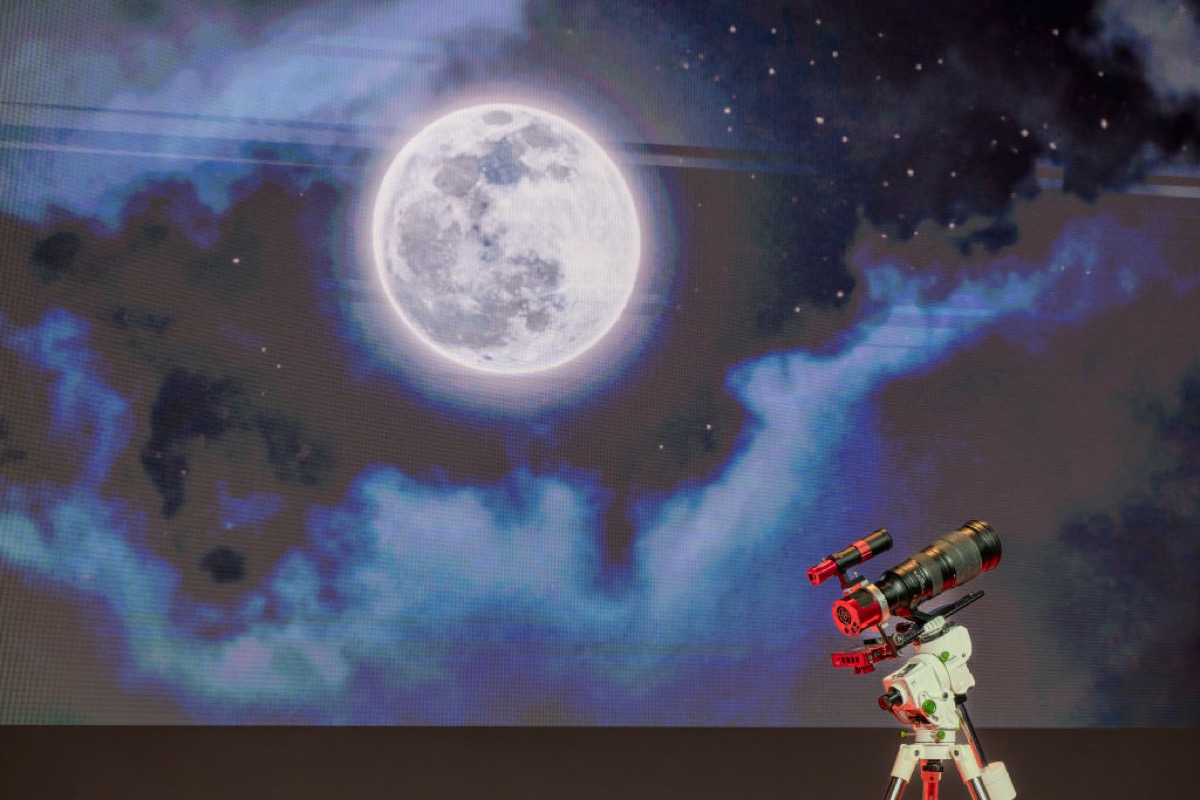Here’s What We Know About Why a Lunar Halo Appears

The Moon has a halo! How angelic! It’s basically in heaven already—hanging out with Crowley and maybe the Olympians. But what’s the scientific explanation for the lunar halo? Read on.
On cold and wintry nights, sometimes it looks like the Moon is surrounded by a shimmering halo! How magic! We don’t know exactly why these haloes happen, but scientists have done what scientists do best and made an “educated guess.”
According to the smart people, the lunar halo occurs due to particles of ice floating around in the upper atmosphere. The Moon’s light is refracted in these little ice crystals like a lens, giving the optical illusion of a halo around the Moon. These particles of ice are the result of cirrus or cirrostratus clouds sitting anywhere between 20,000 feet and 40,000 feet in the air.
But why do these crystals focus the Moon’s light into a halo that spans exactly 22° of the sky? Because of the shape of the crystals! Ice crystals in the upper atmosphere take a hexagonal shape (six sided). Because of this unique shape, the ice crystals get filtered through a prism with a 60-degree apex angle. The angle of minimum deviation for light passing through the crystal is 21.84 degrees—basically 22.
Because the light is filtered through a prism, white light is separated from the other colors of light (think of Pink Floyd’s Dark Side of the Moon album cover). While lunar halos generally appear white, they can also be tinted in rainbow shades, as well. This generally happens when a 22° halo appears around the Sun, as the Moon’s light is often too weak for shades of rainbow colors to appear. Get it together, Moon.
Lunar halos are usually accompanied by smaller, multicolored halos outside of them. These halos form due to light interacting with water molecules puttering around up there. The reflection of light through a water molecule is called a corona, and generally has a radius of around 10° due to the molecular structure of the molecule the light is shining through.
Odds are you’ve seen a lunar halo, as they’re quite common in the winter. Lunar halos are often used (quite successfully) to predict the onset of bad weather. This is because cirrus clouds can be an indicator of a warm front, which can bring about with it a low pressure system causing rain, thunder and plummeting temperatures. Some say that the number of stars encircled in a lunar halo indicate how many days until bad weather arrives. That’s a little less scientifically accurate. But hey, good try, farmers.
(featured image: Horacio Villalobos#Corbis/Corbis via Getty Images)
Have a tip we should know? [email protected]
